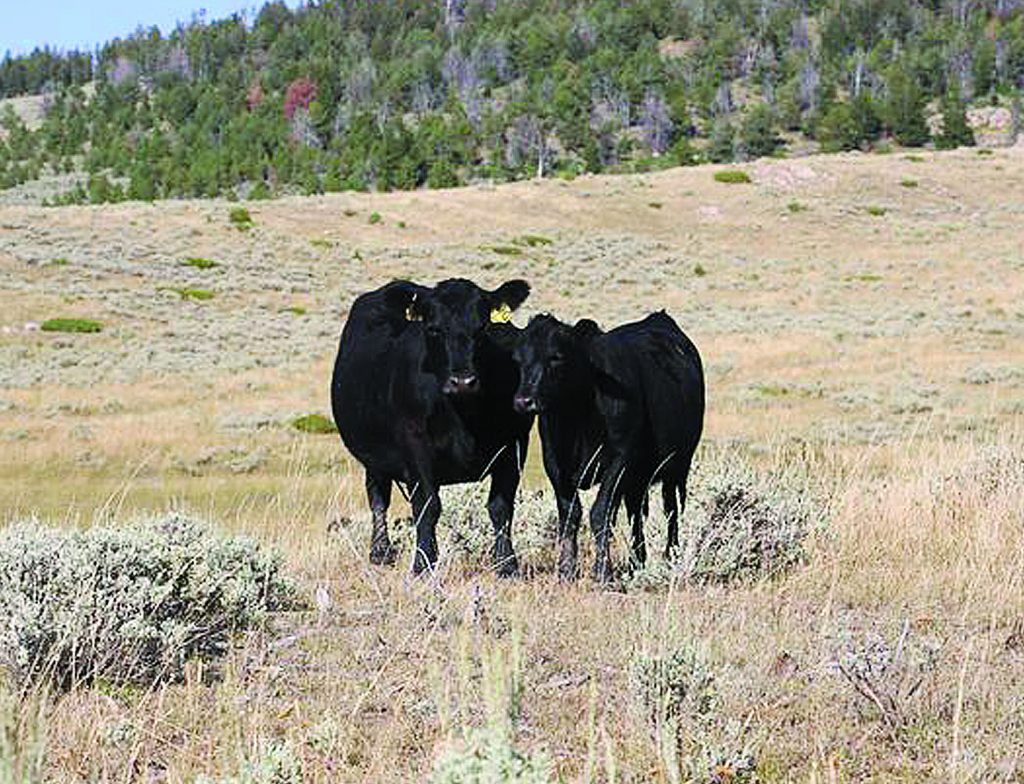2024 Fall Cattle Journal | Redland Angus
Redland Angus works hard for the commercial producer, even if it means going against the grain. Owners Kendrick and Sharon Redland were both raised on commercial operations, providing them with vital knowledge about what commercial cattlemen value.
Keeping an eye on the bottom line was “drilled into us as kids,” according to Kendrick. Their passion for providing the best possible cow on a least-cost basis has earned their genetics a reputation throughout the western states.

“Our genetics seem to be getting a little more popular all the time as people discover them,” he said. “Mostly by word of mouth. They’re easy fleshing, good fertility, least-cost.”
Both Kendrick and Sharon are originally from the Worland area, which is their current headquarters. “My family started in Ten Sleep and Sharon’s family in Hyattville,” said Redland. “We’re the first generation in the registered business.”
His journey into papered cattle began in 1978 when he was seeking to raise better bulls for his family’s commercial operation. “I’ve always had an interest in genetics. That’s how we gravitated toward the registered side.”
After he and Sharon were married, they were presented the opportunity to purchase their own base operation north of Worland. “Over the years we’ve been able to acquire additional ground to run our livestock on,” he said.
The Redland registered herd must overcome the challenges of climate in the Bighorn Basin, which can be arid, hot, and frigid, depending on the season. What’s more, Redlands utilize the nearby Bighorn Mountains east of Ten Sleep for spring and summer grazing, so cattle must be adaptable to higher elevations.
“We’re finding genetics that’ll work in arid environment,” Redland said. “We range calve everything. Our two-year-old heifers calve out on a 13,000-acre BLM permit on the 20 of March. One thing about that, you find out who is going to make a cow and who isn’t. They get put to the test right off the bat.”
Kendrick and Sharon, along with one employee, are the sole operators of their business, so the traits that make up low-maintenance, high-producing cattle are paramount.
“In our genetics, we have to have calving ease, mothering ability, good udder quality. They have got to get those calves up and take care of them by themselves because they have to do it on their own as much as possible,” Redland said.
Redlands did not always operate in this manner, but a near-tragedy necessitated change.
“In 1998, my wife was diagnosed with breast cancer in the spring. We had AI’ed the heifers and then she was diagnosed.” Doctors advised a stem cell transplant immediately, and there were only two locations in the country that would perform the treatment. They turned cows out and focused on Sharon’s battle with breast cancer.
Redland said, “We used to do it how all registered outfits do it: calve early, calve through barn and baby everything. We were getting burnt out on that. It didn’t go with how we were raised, which was to turn cows out and let them calve on their own.”
By the time Sharon’s chemo and stem cell treatments were finished and they returned home, it was September of the same year.
We’d been talking about moving calving dates back, anyway,” he said. After 1998, they started calving the bulk of their cows in June. “They truly range calved at that point, on the mountain.”
The heifers that were AI’ed prior to Sharon’s treatment became the spring calvers. Today, the bulls born to that herd are sold in the January sale and the summer-born bulls are sold in the November sale. “That’s how that became two sales,” he said.
Sharon won her battle with breast cancer and is still actively operating the ranch.
Redlands market around 250 bulls per year. They also market bred females on the November sale and may add females to the January sale in 2025. When they first started, they sold bulls private treaty, then on consignment sales. Their customers, most of which were on the east side of the Bighorns, convinced them to have a sale in Sheridan until that sale barn closed. Now, they host both sales at Buffalo Livestock in Buffalo, Wyoming.
After four decades in the business, Redlands are less concerned with popular genetics and more focused what works. “Our genetics are probably different than the mainstream, and our cattle are quite a bit different than the mainstream,” he said. “Most of our bloodlines come from what was popular in the 1980s. The bulk of our genetics trace back to a guy by the name of Dale Davis in Montana. They’re probably not as big framed as most cattle. They still weigh quite a little, but they have a lot of mass, spring of rib, and depth of body. Very good udder quality, easy fleshing cattle that can make a living in arid environment.”
“EPDs are a big thing now. Numbers have been pushed hard. But we’ve got a customer over at Buffalo who sells their cattle on video. He said, ‘I have not had one buyer ask me what the numbers on my cattle are yet. Not one buyer wants to see the numbers. They want to look at the cows they’re out of and what they look like. They want them deep and stout with a lot of meat on them.’ That’s what our cattle have. They’re deep and stout and they have a lot of meat,” Redland said.
“Our operation is based on type versus numbers.”
Redlands align their values with the ranchers they serve. “We were raised in the same environment we raise cattle under. We savvy how the commercial deal works. They have registration papers, but the cows don’t know that,” Redland said.














